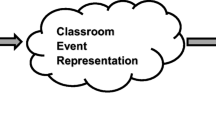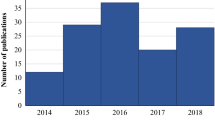Abstract
Enhancing CPR knowledge in schools is the key to improving bystander CPR rate and survival after an out-of-hospital cardiac arrest, but the best method to do so in a whole area is unknown. We wanted to assess if a province-based project, which involves the Secondary Schools of a whole Province, is effective in teaching schoolchildren CPR, and how well the skills are retained. We trained 100 teachers from the 21 Secondary Schools of the Province of Pavia with a BLS/AED course and we supplied each school with 10 low-budget manikins and four educational videos. These videos, about 2 min each, consist of a motivational part, an instructive part, a demonstrative part and a practice-while-watching part. We explained to the teachers how to use manikins and videos in a 2-h course. We carried out both a theoretical and a practical test in 21 classes, randomly selected between the classes trained by the teachers, 3 months and 6 months after the training. In the first 5 months of the project, 5146 schoolchildren aged 14–19, in the 21 Secondary Schools of our Province, were trained by their teachers. We tested 304 students 3 months after the course and 318 students 6 months after the course, with good results both in theoretical and practical skills. Our study demonstrates that the ScuolaSalvaVita project is able to effectively teach CPR through teachers using a video-based training in the Secondary Schools of a whole Province obtaining good long-term memory of CPR skills.
Similar content being viewed by others
References
Berdowski J, Berg RA, Tijssen JG, Koster RW (2010) Global incidences of out-of-hospital cardiac arrest and survival rates: systematic review of 67 prospective studies. Resuscitation 81:1479–1487
Gräsner JT, Lefering R, Koster RW, Masterson S, Böttiger BW, Herlitz J, Wnent J, Tjelmeland IB, Ortiz FR, Maurer H, Baubin M, Mols P, Hadžibegović I, Ioannides M, Škulec R, Wissenberg M, Salo A, Hubert H, Nikolaou NI, Lóczi G, Svavarsdóttir H, Semeraro F, Wright PJ, Clarens C, Pijls R, Cebula G, Correia VG, Cimpoesu D, Raffay V, Trenkler S, Markota A, Strömsöe A, Burkart R, Perkins GD, Bossaert LL, EuReCa ONE Collaborators (2016) EuReCa ONE-27 Nations, ONE Europe, ONE Registry: a prospective one month analysis of out-of-hospital cardiac arrest outcomes in 27 countries in Europe. Resuscitation 105:188–195 (Erratum in: Resuscitation. 2016;109:145–146)
Holmberg M, Holmberg S, Herlitz J (2000) Effect of bystander cardiopulmonary resuscitation in out-of-hospital cardiac arrest patients in Sweden. Resuscitation 47:59–70
Böttiger BW (2015) “A time to act”—anaesthesiologists in resuscitation help save 200,000 lives per year worldwide: school children, lay resuscitation, telephone-CPR, IOM and more. Eur J Anaesthesiol 32:825–827
Böttiger BW, Grabner C, Bauer H, Bode C, Weber T, Motsch J, Martin E (1999) Long term outcome after out-of-hospital cardiac arrest with physician staffed emergency medical services: the Utstein style applied to a midsized urban/suburban area. Heart 82:674–679
Plant N, Taylor K (2013) How best to teach CPR to schoolchildren: a systematic review. Resuscitation 84:415–421
Baldi E, Bertaia D, Contri E (2015) School children learn BLS better and in less time than adults. Resuscitation 88:e15–e16
Cave DM, Aufderheide TP, Beeson J, Ellison A, Gregory A, Hazinski MF, Hiratzka LF, Lurie KG, Morrison LJ, Mosesso VN Jr, Nadkarni V, Potts J, Samson RA, Sayre MR, Schexnayder SM, American Heart Association Emergency Cardiovascular Care Committee, Council on Cardiopulmonary, Critical Care, Perioperative and Resuscitation, Council on Cardiovascular Diseases in the Young, Council on Cardiovascular Nursing, Council on Clinical Cardiology, and Advocacy Coordinating Committee (2011) Importance and implementation of training in cardiopulmonary resuscitation and automated external defibrillation in schools: a science advisory from the American Heart Association. Circulation 123:691–706
Wissenberg M, Lippert FK, Folke F, Weeke P, Hansen CM, Christensen EF, Jans H, Hansen PA, Lang-Jensen T, Olesen JB, Lindhardsen J, Fosbol EL, Nielsen SL, Gislason GH, Kober L, Torp-Pedersen C (2013) Association of national initiatives to improve cardiac arrest management with rates of bystander intervention and patient survival after out-of-hospital cardiac arrest. JAMA 310:1377–1384
Lukas RP, Van Aken H, Mölhoff T, Weber T, Rammert M, Wild E, Bohn A (2016) Kids save lives: a six-year longitudinal study of schoolchildren learning cardiopulmonary resuscitation: who should do the teaching and will the effects last? Resuscitation 101:35–40
Bohn A, Van Aken HK, Möllhoff T, Wienzek H, Kimmeyer P, Wild E, Döpker S, Lukas RP, Weber TP (2012) Teaching resuscitation in schools: annual tuition by trained teachers is effective starting at age 10. A four-year prospective cohort study. Resuscitation 83:619–625
Böttiger BW, Van Aken H (2015) Kids save lives—Training school children in cardiopulmonary resuscitation worldwide is now endorsed by the World Health Organization (WHO). Resuscitation 94:A5–A7
Bohn A, Lukas RP, Breckwoldt J, Böttiger BW, Van Aken H (2015) ‘Kids save lives’: why schoolchildren should train in cardiopulmonary resuscitation. Curr Opin Crit Care 21:220–225
Fonseca Del Pozo FJ, Valle Alonso J, Canales Velis NB, Andrade Barahona MM, Siggers A, Lopera E (2016) Basic life support knowledge of secondary school students in cardiopulmonary resuscitation training using a song. Int J Med Educ 7:237–241
Lynch B, Einspruch EL, Nichol G, Becker LB, Aufderheide TP, Idris A (2005) Effectiveness of a 30-min CPR self-instruction program for lay responders: a controlled randomized study. Resuscitation 67:31–43
Böttiger BW, Van Aken H (2015) Training children in cardiopulmonary resuscitation worldwide. Lancet 385:2353
Böttiger BW, Bossaert LL, Castrén M, Cimpoesu D, Georgiou M, Greif R, Grünfeld M, Lockey A, Lott C, Maconochie I, Melieste R, Monsieurs KG, Nolan JP, Perkins GD, Raffay V, Schlieber J, Semeraro F, Soar J, Truhlář A, Van de Voorde P, Wyllie J, Wingen S, Board of European Resuscitation Council (ERC) (2016) Kids save lives—ERC position statement on school children education in CPR.: “hands that help—training children is training for life”. Resuscitation 105:A1–A3
Böttiger BW, Semeraro F, Wingen S (2017) “Kids save lives”: educating schoolchildren in cardiopulmonary resuscitation is a civic duty that needs support for implementation. J Am Heart Assoc 6:e005738
Semeraro F, Wingen S, Schroeder DC, Ecker H, Scapigliati A, Ristagno G, Böttiger BW (2016) Kids save lives implementation in Europe: a survey through the ERC research NET. Resuscitation 107:e7–e9
Malta Hansen C, Zinckernagel L, Ersbøll AK, Tjørnhøj-Thomsen T, Wissenberg M, Lippert FK, Weeke P, Gislason GH, Køber L, Torp-Pedersen C, Folke F (2017) Cardiopulmonary resuscitation training in schools following 8 years of mandating legislation in Denmark: a nationwide survey. J Am Heart Assoc 6:e004128
Mpotos N, Vekeman E, Monsieurs K, Derese A, Valcke M (2013) Knowledge and willingness to teach cardiopulmonary resuscitation: a survey amongst 4273 teachers. Resuscitation 84:496–500
Zinckernagel L, Malta Hansen C, Rod MH, Folke F, Torp-Pedersen C, Tjørnhøj-Thomsen T (2016) What are the barriers to implementation of cardiopulmonary resuscitation training in secondary schools? A qualitative study. BMJ Open. 6:e010481
Baldi E, Cornara S, Contri E, Epis F, Fina D, Zelaschi B, Dossena C, Fichtner F, Tonani M, Di Maggio M, Zambaiti E, Somaschini A (2017) Real-time visual feedback during training improves laypersons’ CPR quality: a randomized controlled manikin study. Can J Emerg Med 19:480–487
Acknowledgements
We would like to thank all the volunteers of the non-profit associations Pavia nel Cuore and Robbio nel Cuore for their irreplaceable work in organizing BLS-D courses for free, all the teachers who participate in ScuolaSalvaVita project and Alice Apollinari for her writing assistance and language editing.
Funding
The funds to purchase the manikins were part of a grant given by the Lombardy Region dedicated to non-profit organizations and awarded to Pavia nel Cuore, in collaboration with Robbio nel Cuore and Una Famiglia per il Cuore ONLUS. No funding has been received either for other part of this project nor to publish this manuscript.
Author information
Authors and Affiliations
Corresponding author
Ethics declarations
Conflict of interest
The authors declare that they have no conflict of interest.
Statement of human and animal rights
The study is considered exempt from an ethical evaluation because, accordance with Italian law, the study did not include the use of drugs or medical devices, and it was not directly related to health and illness of the participants.
Informed consent
Formal consent is not required for this type of study and no personal data were collected.
Electronic supplementary material
Below is the link to the electronic supplementary material.
Rights and permissions
About this article
Cite this article
Paglino, M., Contri, E., Baggiani, M. et al. A video-based training to effectively teach CPR with long-term retention: the ScuolaSalvaVita.it (“SchoolSavesLives.it”) project. Intern Emerg Med 14, 275–279 (2019). https://doi.org/10.1007/s11739-018-1946-3
Received:
Accepted:
Published:
Issue Date:
DOI: https://doi.org/10.1007/s11739-018-1946-3




